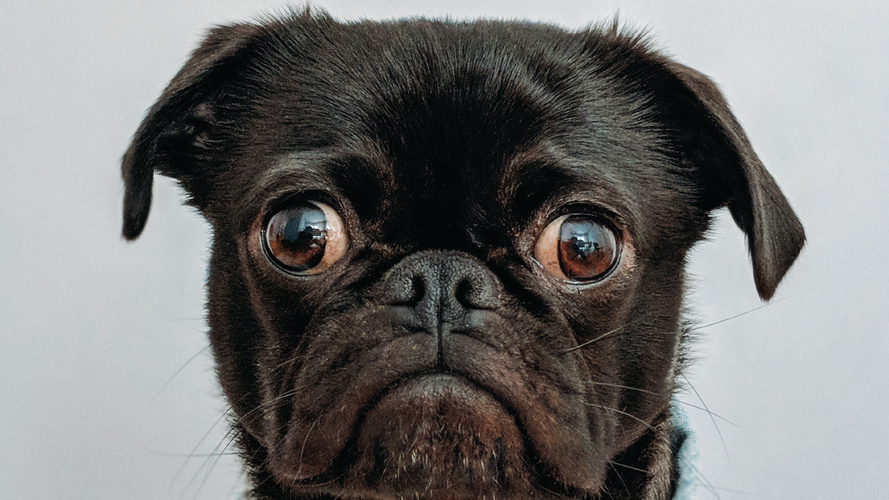Eye Sight Development in Puppies and Dogs
Jan 16, 2025
As a new puppy parent, one of the most fascinating aspects of your furry friend's development is their eyesight. Like humans, puppies go through various stages of vision development. Understanding how a puppy’s eyes evolve can help you ensure that your dog grows up with healthy eyes and proper vision. In this blog post, we’ll explore the stages of eyesight development in puppies and offer tips on keeping your dog’s eyes healthy throughout their life.
The First Few Days: Limited Vision
Puppies are born with their eyes closed, just like human babies. This is a natural part of their development. When they are born, they rely on their other senses, especially their sense of smell and touch, to navigate the world around them. The initial few days are critical as the puppy’s body adjusts to life outside the womb.
Around 7 to 14 days, puppies’ eyes begin to open. However, at this stage, their vision is very limited. Their eyes are still developing, and they are only able to detect light and dark shapes. It's essential during this time to avoid exposing your puppy to bright lights, as their eyes are extremely sensitive.
Weeks 2 to 3: Developing Vision
By 3 weeks, puppies’ eyesight is beginning to improve, but it is still quite blurry. They can start to distinguish between objects and begin tracking movement. This stage is a crucial time for your puppy to learn how to interact with their environment using their vision.
During this period, you may notice your puppy starting to show interest in toys, their littermates, and the world around them, relying on their developing vision to explore. This stage is also when puppies begin to become more social, as they use sight in combination with other senses to recognize and bond with their caregivers and siblings.
Weeks 4 to 8: Sharper Vision
At around 4 weeks, puppies start to see more clearly, with improved focus and depth perception. By this point, they can start to follow moving objects and are learning how to judge distances, which is important for play and interactions. Their color vision is still developing, but they are beginning to see more than just light and dark shapes.
By 8 weeks, puppies are well on their way to having adult-like vision, though their sight may still be a bit immature compared to fully grown dogs. This is a key stage in a puppy’s early learning as they start to develop important behavioral patterns and become more independent.
Adult Dog Vision: Full Development
A dog’s eyesight is fully developed by around 6 months, though this can vary slightly depending on breed and individual growth rates. At this stage, your dog will have mature vision and will be able to see clearly in low light conditions and track moving objects with precision. Most dogs see the world in a spectrum of colors, but their color perception is more limited compared to humans. Dogs tend to see shades of blue and yellow, but not reds and greens.
Common Eye Problems in Dogs
As puppies grow into adults, it’s essential to stay aware of their eye health. Just like humans, dogs are prone to certain eye issues, such as:
- Cataracts: This condition causes clouding of the eye lens, affecting vision.
- Conjunctivitis: Inflammation of the tissue around the eyes, often caused by infection or allergies.
- Dry Eye: A condition where the eyes do not produce enough tears, leading to irritation.
- Glaucoma: Increased pressure in the eye that can lead to blindness if left untreated.
Tips for Maintaining Your Dog’s Eye Health
- Regular Vet Checkups: Ensure your dog’s eyes are checked during routine vet visits to catch any issues early.
- Cleanliness: Keep the area around your dog’s eyes clean to prevent infections. Use a damp cloth to wipe away discharge or debris. Shop our range of eye care.
- Nutrition: A well-balanced diet with essential nutrients like Omega-3 fatty acids, vitamins A and C, and antioxidants supports overall eye health. Shop our wide range of supplements.
- Avoid Bright Lights: Just like puppies’ sensitive eyes, bright lights or harsh environmental conditions can strain a dog’s eyes. Ensure your dog isn’t exposed to extreme conditions.
- Watch for Signs: If you notice your dog squinting, pawing at their eyes, or having difficulty seeing objects, schedule a vet visit promptly.
The development of a puppy’s eyesight is a remarkable process, and understanding how it unfolds allows you to be a better pet parent. From limited vision at birth to fully developed eyes by 6 months, each stage is essential in a puppy’s growth. By keeping an eye on your dog’s health and providing them with the proper care, you can help ensure that they enjoy a lifetime of healthy vision.

